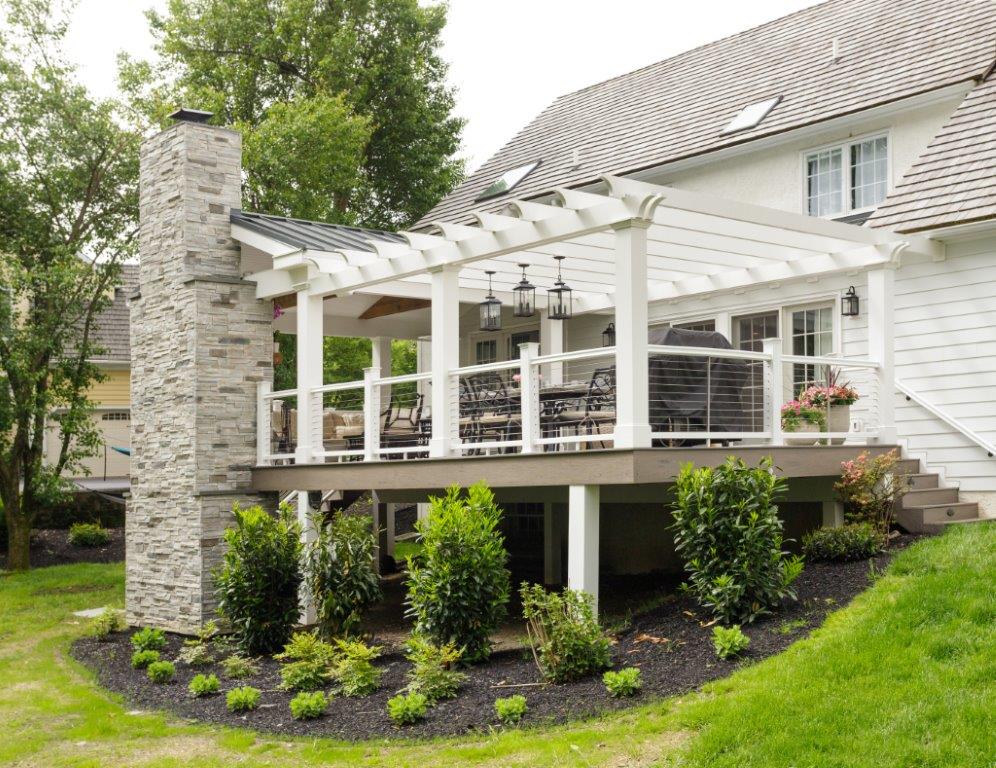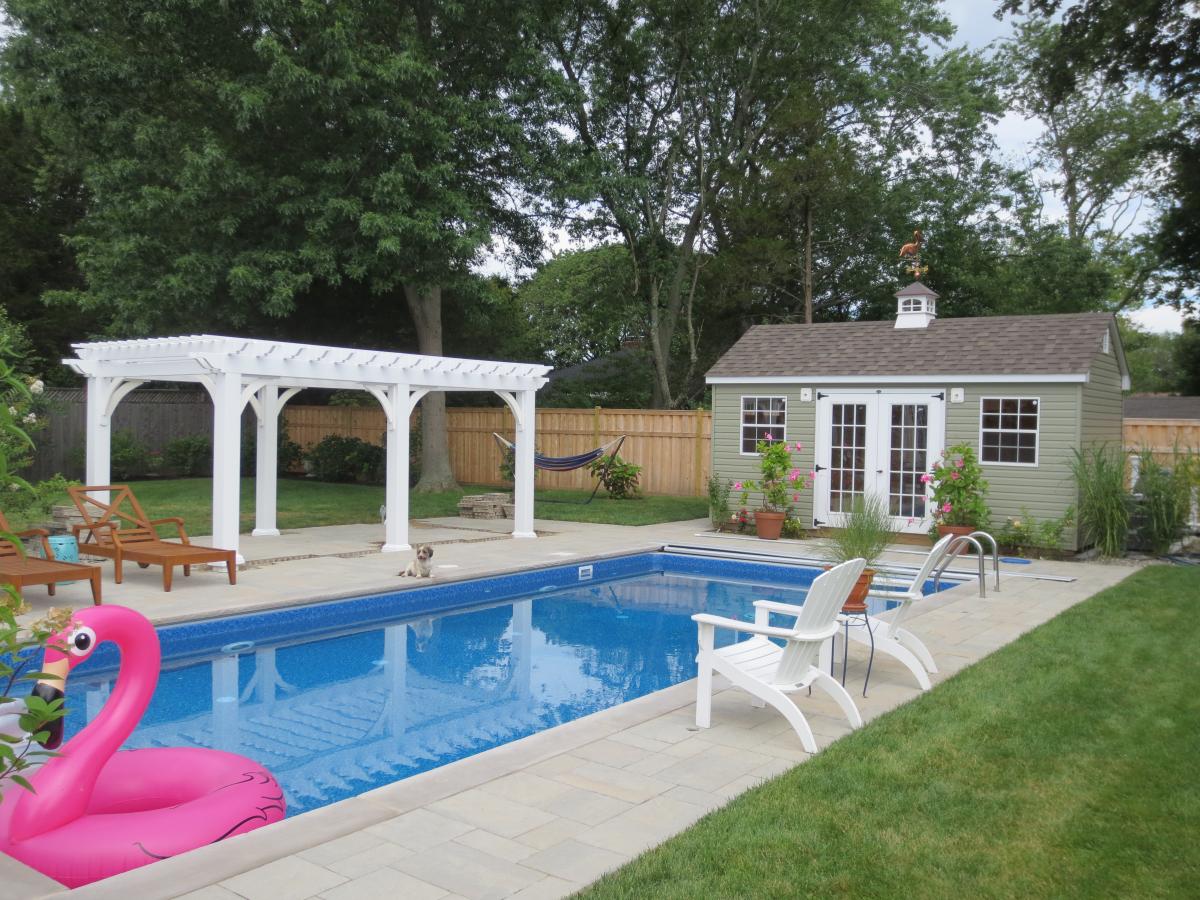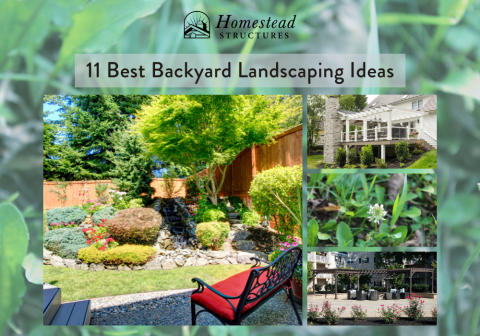Backyards are one of the most attractive aspects of home ownership. They provide a space for kids and pets to play and serve as a venue for summertime cookouts and picnics.
A well-maintained backyard can serve as an extra living space throughout the year. With the right planning and design, you can create privacy and cozy sitting spaces. There are challenges to building these open-air living rooms and in-home recreation areas, including what types of lawn cover to use, and what features are worth the investment versus those that may require too much upkeep.
With proper planning, you can get the features you want while limiting the need for time-consuming maintenance. Here are 11 ideas for creating a usable and attractive backyard.
1. Prioritize Privacy
A true outdoor living space requires privacy. While backyards are sometimes places to connect with neighbors and host friends, they can also serve as an extension of your house.
Enclosures can be expensive, but there are options for increasing privacy without a significant investment. These include:
-
Privacy fences: Privacy fences are wood or vinyl. They stand four to six feet tall and can encircle all or part of the yard.
-
Privacy screens: Privacy screens are an alternative to fencing the whole yard. Made from wood, fabric, vinyl, or metal, they can enclose a patio area. They can close off the section of the yard while also letting in some natural light.
-
Rock walls: Retaining walls or rock walls made from brick or stone can close off part of the yard. These structures block wind and create a cozy sitting area for colder seasons.
You can also consider planting hedges. Bushes or tall shrubs can create a barrier without fencing or screens.
2. Forgo the Patio
Patios and decks are common in backyards. They are undeniably nice but require a large initial investment and ongoing maintenance. Forbes puts the average cost for a new ground-level patio at $3,000 to $5,500.
 You might consider a simple wood or vinyl pergola instead. These structures provide shade and give you a comfortable space to lounge in the open air without having to invest in a full deck or patio. Additionally, a gazebo offers a closed roof structure for maximum shade.
You might consider a simple wood or vinyl pergola instead. These structures provide shade and give you a comfortable space to lounge in the open air without having to invest in a full deck or patio. Additionally, a gazebo offers a closed roof structure for maximum shade.
3. Consider Grass Alternatives
Grass is the default plant for backyard landscaping. It is soft and pleasant to walk on. Lawn care equipment, like mowers and sprinklers, are available almost everywhere.
Low-maintenance alternatives can limit the time and resources you need for lawn care.
-
Moss: The University of Maryland mentions moss as a suitable grass alternative, especially in moist areas. In addition to providing groundcover, it prevents erosion.
-
Creeping Jenny: This shrub works as a lawn substitute in most climate zones. It works as a lawn substitute for those looking for something green that you can walk on.
-
White clover: Penn State’s College of Agricultural Sciences recommends white clover for areas with lots of foot traffic. The school points out that previous generations used to use white clover in grass seed mixtures.
You can add trees and shrubs to areas that don’t have foot traffic. These plants can add to the appearance of the backyard and keep weeds and unwanted plants from growing in the same space.
4. Xeriscape
Xeriscaping is a landscaping approach that limits or eliminates the need for irrigation. This design philosophy is popular in the Southwest and other regions with little rainfall. However, it can work in any state.
Xeriscaping relies on local plants that thrive in the climate without any human intervention. They are drought-tolerant and do not require fertilizers or chemicals. The method can also include mulch, landscaping stones, and other features that provide ground cover without requiring maintenance.
Homeowners embrace xeriscaping because of its environmental benefits, such as water conservation and avoidance of pesticides and fertilizers. It can also reduce maintenance time and cost of caring for your backyard.
5. Go Heavy on the Greenery
Some people want a backyard with an open lawn and space to run and play. Others use greenery to create a natural atmosphere. You might seek a jungle-like backyard retreat or a meadow with local wildflowers. You can cut paths through the yard and have your private nature reserve right outside your back door.
The trick to a successful backyard greenspace is to use plants requiring little care that thrive in your climate and conditions.
The US Department of Agriculture (USDA) maintains a plant hardiness climate zone map. Zones 1A (coldest and harshest) to 13b (hottest and wettest) are each suitable for different plant life. You can use this map to find the plants best for your particular zone.
6. Install a Water or Rock Feature
Rock features can add to the backyard ambiance. You might even consider a waterfall or pond that can add something unique to your landscape.
Rock features and waterfalls can serve as barriers that provide additional privacy without installing a fence or screens. Public television program This Old House suggests using boulders or field stones to cover larger areas. Flagstones are best for paving, while river rock offers an attractive smooth appearance ideal for landscaping.
Backyard water features need pumps to keep the water moving. Stagnant water causes algae growth and attracts mosquitoes, who lay their eggs in the unmoving pools.
7. Build a Pool 
A pool can add to your home’s appeal. An in-ground or above-ground pool will give friends and family a place to swim during the summer. Pools can also add value to your property. National Association of Realtors site HouseLogic claims an in-ground pool can add 7% to the value of a home.
If you want to invest in a pool, you can also consider additional structures. A pool house can store the pump and maintenance chemicals and equipment. You can add a fence around the water for safety, and patio or canopy features for a pool-side lounge area.
8. Create Accessible Pathways
Pathways can help you segment your backyard and offer a way to get up close to nature if you have landscaping with a lot of greenery.
Accessible pathways, with level surfaces, paving stones, or cement, can make the yard usable for all visitors. This Old House suggests using a bottom layer of crushed stone to create a solid base that won’t settle or shift over the following years. You can then lay stones or bricks over this base or pour cement if you need a continuous hard surface.
Accessible pathways are user-friendly and accommodate family members and visitors with mobility issues.
9. Use Fencing to Block Off Sections of the Yard
Fencing can surround your whole yard, but it can also block off a section of your yard. This approach can be useful for creating different zones on the property. You can mark a patio area, recreation space, or garden.
This interior fencing can be practical, keeping animals out of garden spaces and protecting patio cocktail hour from kids playing ball in the main yard.
10. Rely on Low-Maintenance Yard Ideas
Xeriscaping is one approach to low-maintenance landscaping. Other options can also reduce the amount of time you need to spend in the yard.
-
Permaculture landscaping relies on local plants that return year after year without requiring more planting or additional care.
-
No-mow and low-mow lawns allow you to enjoy grass without weekly trimming sessions. Some species of fine fescue grasses require minimal mowing, and you can opt for some species of moss that never require mowing.
-
Rock gardens or areas with landscaping mulch provide artificial ground cover. They are attractive for landscaping and stop weed growth.
Grasses or plants require trimming, but their presence reduces the amount of space available for weeds to infiltrate.
11. Provide Backyard Seating
You can install cushioned seating in a covered patio area. If you have an open space, you can still use cushions if you place them on plastic, vinyl, or treated wood seats.
These extra features must be removable so you can take them inside if they get wet.
Portable lawn chairs offer the advantage of different location choices. You can also add benches, chairs, or seats in different areas around the yard. These need to be weatherproof, and you should be able to store them during the winter.
Let Homestead Help
One or more of these ideas can help you transform your backyard into an attractive outdoor living space. With the right plan, you can enjoy the benefits of a beautiful backyard with minimal maintenance and watering. Interested in adding a pergola to your backyard to further enhance your landscaping? Connect with a Homestead Structures outdoor living specialist or request a free quote today.

Facebook Comments Box